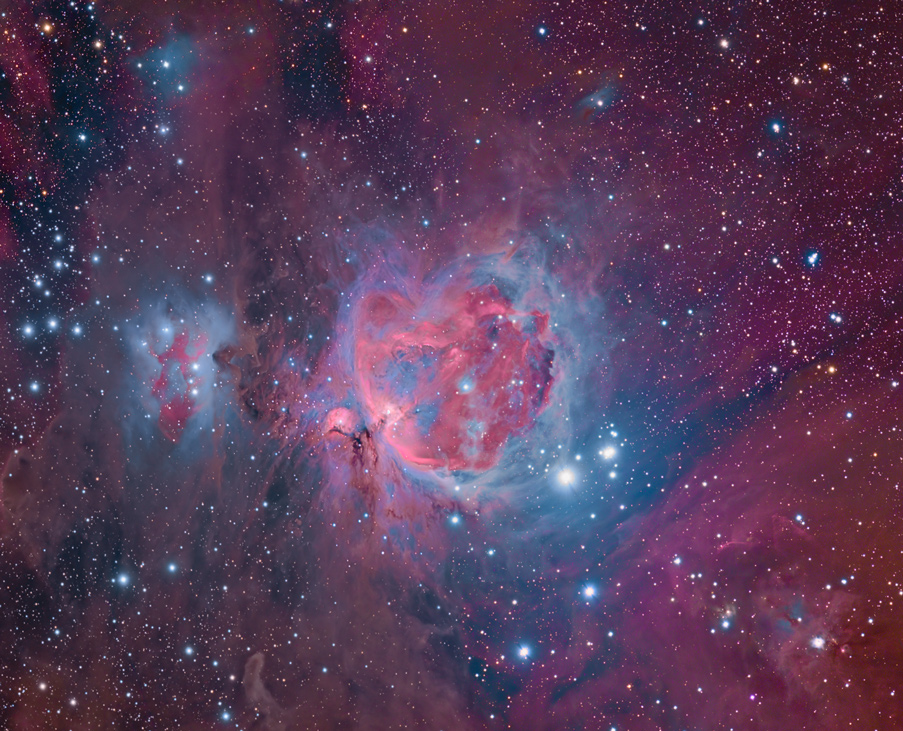
M42, M43 and NGC1977: This is another small piece of the Orion Molecular Cloud Complex,
a large star-forming region in the constellation Orion.
The large, bright double-ball in the center of the image is the Great Orion Nebula (M42 is the larger part, to the right of the dark lanes; M43 is the much smaller part, to the left of the dark lanes).
NGC1973, NGC1975 and NGC1977 (the blue regions), which are separated by the reddish regions, called the "Running Man Nebula," make up the other significant-sized nebula, to the left of M42/M43.
Together, M42, M43 and NGC1977 make up as Orion's sword--they are that bright. The Orion Nebula is one of the brightest nebulae
seen from Earth, and is the closest region of massive star formation to Earth.
The M42 nebula is estimated to be 24 light years across. It has a mass of about 2000 times the mass of the Sun. Technical Information: HaRGB photo, totalling about twenty hours of data. Because the dynamic range of the Orion Nebula is so great, I took a series of exposures (15-seconds; 90-seconds; 300-seconds and
600-seconds (broad band) or 900 seconds (Ha)), and combined them for a HDR image. Royal PITA :). Equipment: Takahashi FSQ106N, SBIG STL11000M (with Astrodon Generation 2 filters), on a Bisque Paramount ME German Equatorial Mount. Image Acquisition/Camera Control:MaximDL, working in concert with TheSky v6, all controlled with ACP Observatory Control software. Processing: All images calibrated (darks and dawn flats), aligned, and combined in Pixinsight. Color combine in Pixinsight. Finish work was done in Photoshop CS5. Location: Data acquired remotely from Fair Dinkum Skies, near Moorook, South Australia (except for one panel, which was taken from New Mexico Skies, Mayhill, NM). Date: Images taken in winter 2012-2013 and winter 2013-2014. Image posted January 20, 2016. CCD Chip temperature: Varied Copyright 2012-2016 Mark de Regt
This area is about 1,500 light years from us. The wispy shape of the ionized gases will change over time (thousands of years), as the stellar winds "blow" the nebulae.
This field is a crop of this field.